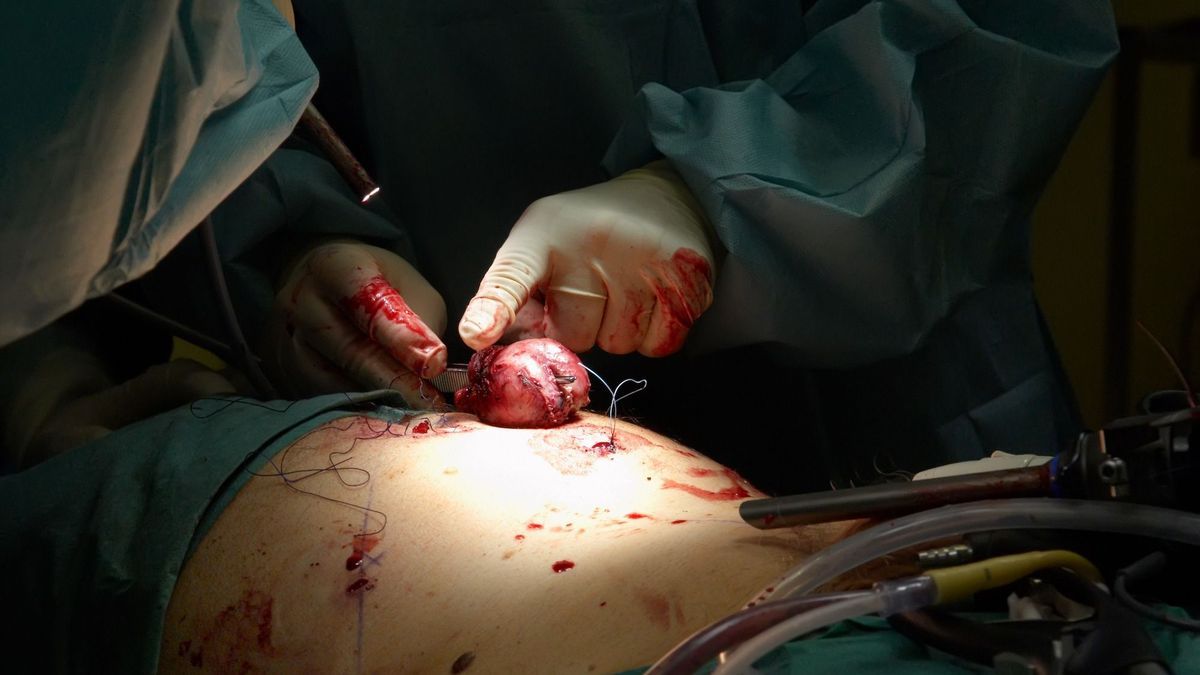
Published on
Updated
The removal of a kidney, partial or total, can occur in different medical situations. How is this surgical procedure carried out? What are the indications? What are the consequences of a nephrectomy? Explanations from Dr Yann Bayoud, urological surgeon.
Every year, 10,000 new cases of kidney tumors are recorded in Europe. Promoted by tobacco, obesity and high blood pressure, kidney cancer mainly affects men. Often refractory to chemotherapy and radiotherapy, nephrectomy (partial, total or enlarged kidney removal) remains the surgical procedure of reference.
Partial, total or enlarged nephrectomy: surgical options
Indeed, in certain cases, the disease can cause nephrectomy, that is to say removal of the kidney, whether partial or total. “A partial nephrectomy consists of removing part of the kidney, most often the tumor, while preserving the nephrotic capital., underlines Dr Yann Bayoud, urological surgeon. Depending on the medical situations encountered, depending on the size of the tumor, a total nephrectomy may also be considered. Finally, we speak of extended nephrectomy when the ablation includes not only the kidney but also the entire renal compartment (adrenal gland).
If cancer represents the majority of indications for nephrectomy, other diseases can give rise to such an operation. “This is the case for certain serious infections, such as acute xanthogranulomatous pyelonephritis, or when the kidneys are said to be “non-functional but symptomatic” and cause recurrent infections or pain., continues the urological surgeon. Finally, organ donation also requires a total nephrectomy.
Often preferred to a total nephrectomy, a partial nephrectomy is technically more complex, thereby increasing the risk of post-operative complications.
Several surgical intervention techniques
The procedure takes place under general anesthesia and lasts 2 to 3 hours. For patients who smoke, smoking cessation must be completed six to eight weeks before the operation. Depending on the medical situation and the therapeutic objective, several methods of surgical intervention are possible.
Open surgery, laparoscopy, laparotomy and lomboscopy
Different treatment options are possible and should be discussed with your doctor, depending on your clinical situation, the consequences and risks associated with each surgical technique.
- The first technique of surgery consists of a so-called “open air” incision. It leaves a scar on the abdominal wall.
- More recently, new techniques of minimally invasive, laparoscopic surgery with or without robotic assistance, have made it possible to considerably improve the precision of this type of surgical intervention by limiting lesions and other scars, and above all to significantly improve the post-operative period.
- Thus, a laparoscopy or lumboscopy with or without robotic assistance can be considered for partial or total ablation of the kidney. “This technique consists of making small centimeter incisions allowing a safe, precise and less invasive procedure than the so-called open technique. Most often, the post-surgical follow-up of the patient is satisfactory. Only the extraction of the operating part will require widen one of the incisions”, explains the surgeon.
During the partial nephrectomy procedure, in most cases, the vascularization of the kidney must be temporarily interrupted by clamping (temporary occlusion of the vessels vascularizing the kidney), while the tumor is removed. “This clamping time should not exceed 25 to 30 minutes.”continues the specialist.
Depending on the patient’s medical situation (age, state of health and cause of the nephrectomy), the surgeon will insert a urinary catheter. This can be removed after the procedure or the next day.
If the nephrectomy is associated with cancer, an analysis of the surgical specimen will be carried out during a pathological examination in order to clarify the diagnosis and define possible additional treatments.
Possible complications and post-operative follow-up
Despite recent technical advances in surgery, a nephrectomy remains a fairly heavy surgical procedure that can lead to various kinds of complications. Post-operative care and support helps reduce risks.
Thus, a risk of bleeding, infection, phlebitis or thromboembolic accident remains possible. “This is why the prescription of an anticoagulant for 4 weeks is necessary to prevent these risks. completes the specialist. More generally, there are risks of damage to the digestive tract, arteriovenous fistulas, pulmonary embolism or infarction.
“More rarely, we can also observe vascular complications with false aneurysms, a serious but reversible complication after interventional radiology treatment,” adds Dr Yann Bayoud. Finally, in the case of total nephrectomy, damage to neighboring organs (colon, small intestine) is also possible.
Recent minimally invasive surgery techniques have made it possible to considerably reduce the length of hospitalization. “Apart from serious or specific cases, patients can now return home after 2 to 5 days. says the urological surgeon. From the day after the operation, patients can in principle eat and walk with the help of a physiotherapist. Gentle physical activity (walking, exercise bike, etc.) can be resumed after a week. “On the other hand, certain activities should be avoided, such as carrying heavy loads, for several weeks in order to avoid placing a significant load on the abdominal wall”explains Dr Yann Bayoud.
During hospitalization and for several months after the procedure, rigorous control of creatinine must be carried out. In addition, for at least 5 years, a thoraco-abdo-pelvic scan is also prescribed. Specific medical recommendations are addressed to patients who have had a kidney removed. “When only one kidney is functioning, taking certain anti-hypertensive and anti-inflammatory medications will be possible with increased monitoring, but it may sometimes be contraindicated.illustrates the doctor.
